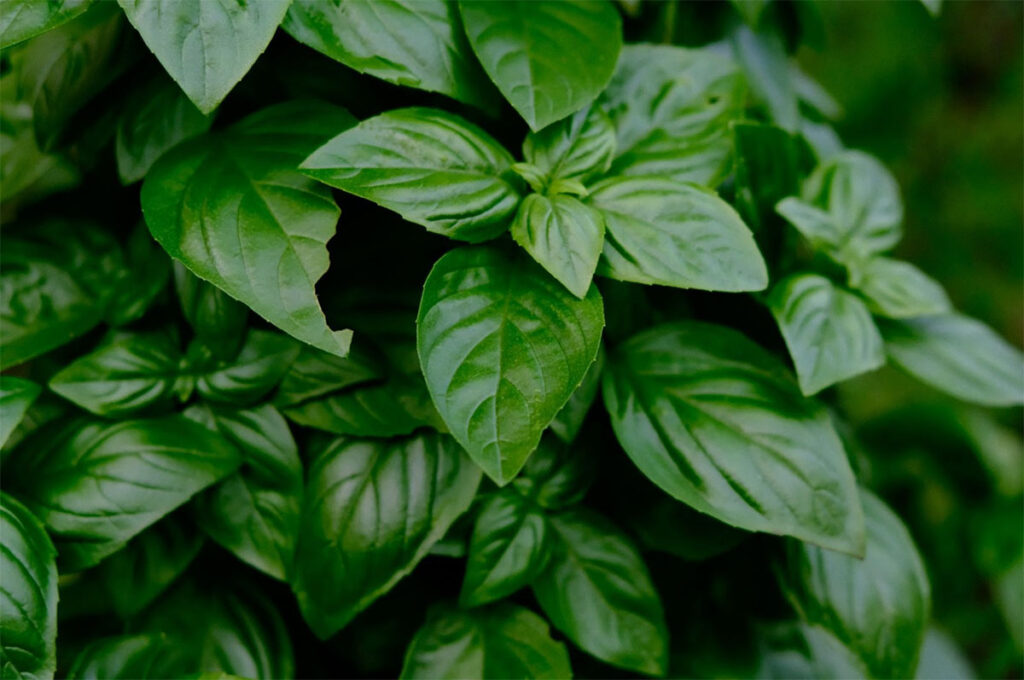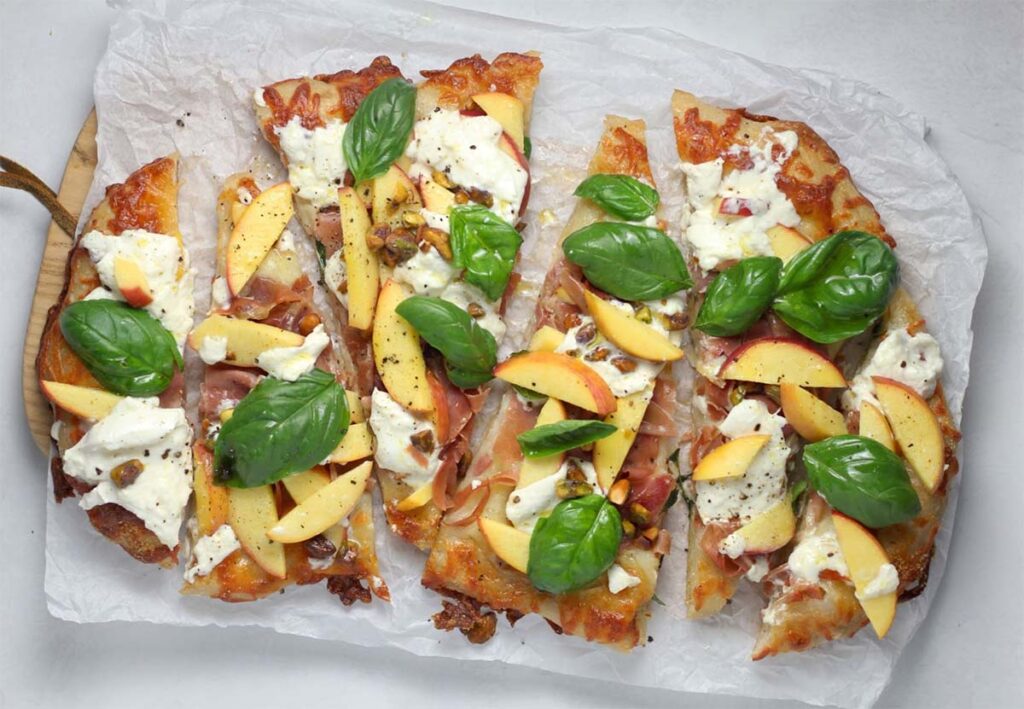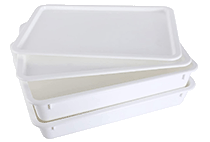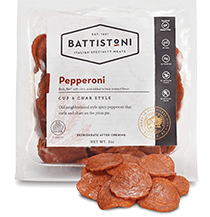As the weather warms up and plants and flowers bloom, we know it’s time for the summer season. Summer season means it’s grilling time and time to stop and smell the basil. You have probably noticed basil plants in your local supermarket or farmers’ market.
Many home chefs buy fresh basil plants to use throughout the summer to add fresh leaves to favorite summer salads and pizzas. Basil is an annual plant that, once the summer is over, it’s dried basil until the following season.
But that’s not the only way to grow basil; basil can actually be a perennial plant. It is possible to grow basil for homemade pizza year-round if you take the plants indoors and care for them throughout the winter. And that’s exactly what we do in our home. There’s really nothing like always having a luscious green basil plant to pull off leaves for our pizzas.
Table of Contents
Recommended Shortcut
If you’re anything like us, and just want fresh basil leaves to pull off for your homemade pizzas without any effort of growing them and emitting that awful patience thing, then buy live basil plants! The trick is just keeping them alive.

What is Basil?
Basil is an herb from the mint family. The freshly picked leaves are used in dishes throughout the world. It is mainly associated with Italian cuisine but is widely used in Indian, Thai, Chinese, Greek, Mexican, and other parts of the world. It is easy to grow from seed, and if you properly care for them, you will be rewarded with fresh basil leaves to flavor your favorite dishes like homemade pizza.
In some cultures, basil has been historically used medicinally for various ailments, including stomach pains, digestive issues, skin infections, loss of appetite, depression, and anxiety.
When you think of basil for homemade pizza, you probably think of Genovese or Italian basil with its bright green leaves and fragrant smell. This is the traditional basil that is added to a Margherita pizza or placed between fresh ripe tomatoes and fresh creamy mozzarella in a Caprese salad.
Varieties of Basil
But here are other varieties of basil that you can grow in the garden too:
Sweet Thai basil is slightly spicier and is commonly used in Asian cuisine.
Lemon basil smells like Italian basil with a bit of citrus flavor; it’s used in chicken and fish dishes.
Cinnamon basil has a sweet cinnamon aroma when you pinch the leaves and is used in teas, desserts, and Indian cooking.
Purple basil has dark purple leaves and a stronger flavor reminiscent of cloves.
Holy basil is fragrant with a spicy, musky aroma.
There are other varieties of basil, but these are the most common and, most importantly, the ones that complement pizza flavors.

What You Need to Grow Your Own Basil Plants
- Organic soil
- Seeds
- 6-inch pots
- Grow light (optional)
Start with good organic soil and pots with drainage. Add the soil to the pots, plant the seeds, and keep the soil moist for the first few days. You can cover the plants with a plastic bag similar to a motel shower cap to keep the seeds warm and the humidity high as they germinate.
Once germinated, they will start growing. Wait a few weeks before harvesting your new basil plant to ensure that it is healthy.
Basil plants need sun and grow best indoors on a bright sunny windowsill. If you don’t have enough light, you can also use grow lights to give them enough light.
You can keep them indoors in pots or transfer them outside in the ground or in bigger pots when the ground temperature is at least 70º F.
Just one well-maintained basil plant will yield about a 1/2 cup (or a small bunch of leaves) of fresh basil each week!
How to Grow Basil for Homemade Pizza
Here are some of the basics to get started growing the herbal star of the culinary world, basil.
Soil – A well-drained soil with neutral pH is best.
Sun – Basil plants love the sun.
Water – Give it water at the base when it feels dry.
Spacing – Keep plants 12 inches apart for maximum growth.
Harvesting – Pick leaves as you use them.

Pro Tips
- For a healthy plant, do not let basil plants flower.
- Basil grows well with tomatoes, lettuce, parsley, peppers, and oregano. So adding it to your pizza garden is an excellent choice.
- If moving your indoor plants outside, make sure to adjust them gradually by hardening them. Put them outside for a few hours a day for a week before planting them outside.
- Outside basil doesn’t need fertilizer, but indoor basil plants benefit from organic fertilizers.
- When the cold damages basil plants, the leaves turn black and lose flavor.
How to Use Basil on Homemade Pizza
When cooking with fresh basil, you want to add it to the dish in the last five minutes of cooking. It is so strong and doesn’t need to be cooked too long.
When to put Basil on Homemade Pizza?
If you add fresh basil leaves to homemade pizza, add them right after the pizza is cooked.
Adding them with the rest of the toppings beforehand and cooking them at high heat will cause them to blacken and lose flavor, plus, the dark color affects the overall look of the pizza.
Have you ever seen black basil leaves on a Margherita pizza? Trust us; it’s not nearly as appetizing as the bright green leaves.

There are other ways to use basil on pizza, not just a classic Margherita pizza.
- Italian basil with peppers and salami.
- Thai basil with chicken and chilies.
- Lemon basil with shrimp and oysters.
- Purple basil with ricotta and blackberries.
- Cinnamon basil with curried chicken and paneer cheese.
- Italian basil with colorful cherry tomatoes, Feta cheese, and Kalamata olives.
- Italian basil with smoked salmon, capers, and Pecorino cheese.
- Lemon basil, blue cheese, and mushrooms.
How to Use Fresh Basil Beyond Pizza
- Caprese salad.
- Pasta salad.
- Chicken pesto sandwich.
- Homemade pesto.
- Basil hummus
But those are recipes for other blogs. We focus on the the homemade pizza here!
What is your favorite way to use basil on your homemade pizzas?













